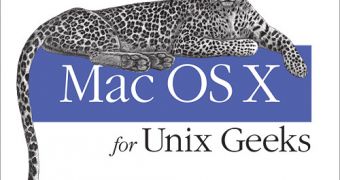X Unix For Mac
The UNIX trademark is owned by The Open Group, which basically uses it as a certification mark for SUS-compliance. OS X has been since 10.5, so it qualifies as UNIX (not just UN X or Unix-like) in that sense. Most GNU/Linux distributions are not registered as SUS-compliant, so they should be called something like UNIX-like or UNX in that sense, even though neither of those terms is used by The Open Group. OS X could also be considered to be in the sense that Darwin was based on FreeBSD (or ), and BSDs are usually considered to be genetic Unix, since the original BSD was based on AT&T code. Both GNU and Linux were rewritten from scratch though, so GNU/Linux platforms are not generally considered to be genetic Unix.
In a functional or spiritual sense, OS X is maybe less Unix (whatever that means) than platforms that are merely 'Unix-like' in the first or second senses, but OS X could still considered to 'be Unix' in all three senses.
I'm a newbie into the unix and linux world. I'd like to know very clear about the things I'm learning and their background. But I find there's complex relationship between the followings: unix, BSD, Mac OS X, linux and GNU? I just can't figure out what is what and what is based on what. I'd be grateful if someone can clarify the relationship between all these things for me. My goal is to learn how to use the common command line tools for programming on these unix like or linux systems.
Some people say that many tools on linux are compatible with Mac OS X system. What makes those tools compatible on these systems?? I have a Mac.
I want to know what part of the system or which tools is common on all unix, unix like systems and linux system. So that if I learn it on Mac OS X, I can apply the knowledge to other systems. UNIX is a loose term for a family of operating systems, but the original UNIX was written by Dennis Ritchie and Ken Thompson at Bell Labs as a better version of something older called Multics. BSD (Berkeley Software Distribution) is a version of UNIX developed by folks at UC Berkeley starting from the original Bell Labs code.


X Unix For Mac Free
Several other derivatives have come from BSD, notably FreeBSD, OpenBSD, and NetBSD. GNU (GNU's Not Unix) started as an attempt by Richard Stallman and other folks from the Free Software Foundation to completely rewrite UNIX. They succeeded in rewriting most of the user-space tools, but their kernel (the Hurd) had a few issues. In the meantime, Linus Torvalds, as a student, decided to write his own UNIX-like operating system since he couldn't afford the real thing.
The resulting kernel, Linux, began to be used along with all the GNU user-space tools, resulting in the GNU/Linux distributions like Ubuntu that are popular today. OS X was brough to Apple from Steve Jobs' previous company NeXT, and was built using pieces from BSD around a kernel called Mach, which incidentally is also the basis of GNU Hurd. Since all the things are so connected, it makes sense that they look alike in many ways. There is a standard called POSIX that tries to make their similarities official.
Mac Os X For Unix Geeks Pdf

This includes a C programming environment with certain functions, and a set of command line tools (like cat, make, and so on). POSIX is a good starting point for determining what is common. I haven't done much work on OS X, but I think a C compiler, the build tool (make), and the POSIX C libraries should allow one to program in C portably across UNIX-like systems. Of course, there will be subtle and annoying differences, but this is a starting point. At a higher level, there are many programs (like IDEs) that ship versions for both Linux and OS X.